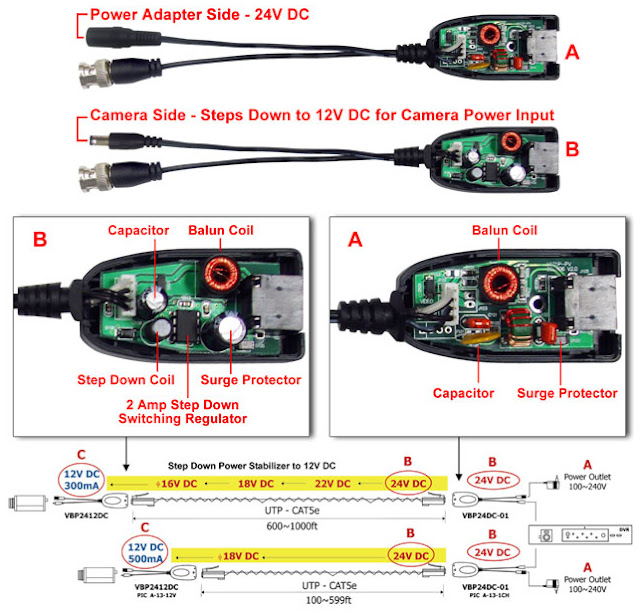Modern cameras and lenses are generally CS mount rather than C mount. With CS mount cameras both types of lenses can be used but the C mount lens requires a 5mm ring (VM400) to be fitted between the camera and lens to achieve a focused image. With C mount cameras it is not possible to use CS mount lenses as it is not physically possible to mount the lens close enough to the CCD to achieve a focused image.
 | |
| C Vs CS Mount Lens |
The physical difference is the CS mount lens is designed to be mounted ~5mm closer to the image sensor than a C mount lens. (C-mount lenses are designed to be mounted 17.526mm in front of the image sensor vs. 12.5mm for CS-mount.) You can always use a C mount lens on a CS mount camera by using a 5mm spacer ring (many cameras now have C/CS selectable adjustment screws or rings). You can never use a CS mount lens on an older style C mount camera unless you are willing to physically modify the camera. Cost wise the CS mount lens is much less expensive since it uses fewer glass elements. Quality of image is the same. C mounts are becoming less and less popular and are generally only used on the more telephoto focal lengths such as 25, 50 and 75mm, and bigger zooms.
Both the C and CS mount are 1 inch wide (25.4mm) with 32 threads per inch (0.03125 inches or 0.79375mm). This dimension comes in handy if you need to insert a spacer to obtain proper focus. Unscrew the lens (or unscrew the camera from the mount in the case of telescope use and count the turns until proper focus is obtained. Multiply the above dimension by the number of turns to obtain the needed spacer or washer. (Washers are sometimes used as spacers if there are enough threads available.) Example: 1.25 turns x 0.79 mm = 0.9875 or ~1 mm. Many cameras (especially newer ones) have set screws to allow small adjustments in the distance between the lens and the image sensor.
Troubleshooting
A lot of the time when someone is using a CS mount security camera they will
sometimes get a fuzzy picture and not be able to focus the image properly. If
you look at what we have discussed so far you can probably figure out a
possible solution to this. The most common mistake people make is that they
will mount their CS mount lens onto their security camera while the 5mm ring is
still attached. This ring is only useful if you are using a C mount lens. By
simply removing this ring they will allow the CS lens to get close enough to
the CCD chip to obtain a proper focus.By taking the time to understand these differences in mounting for C and CS mount cameras and lenses you will help prevent damages to your surveillance equipment and reduce your workload.


















